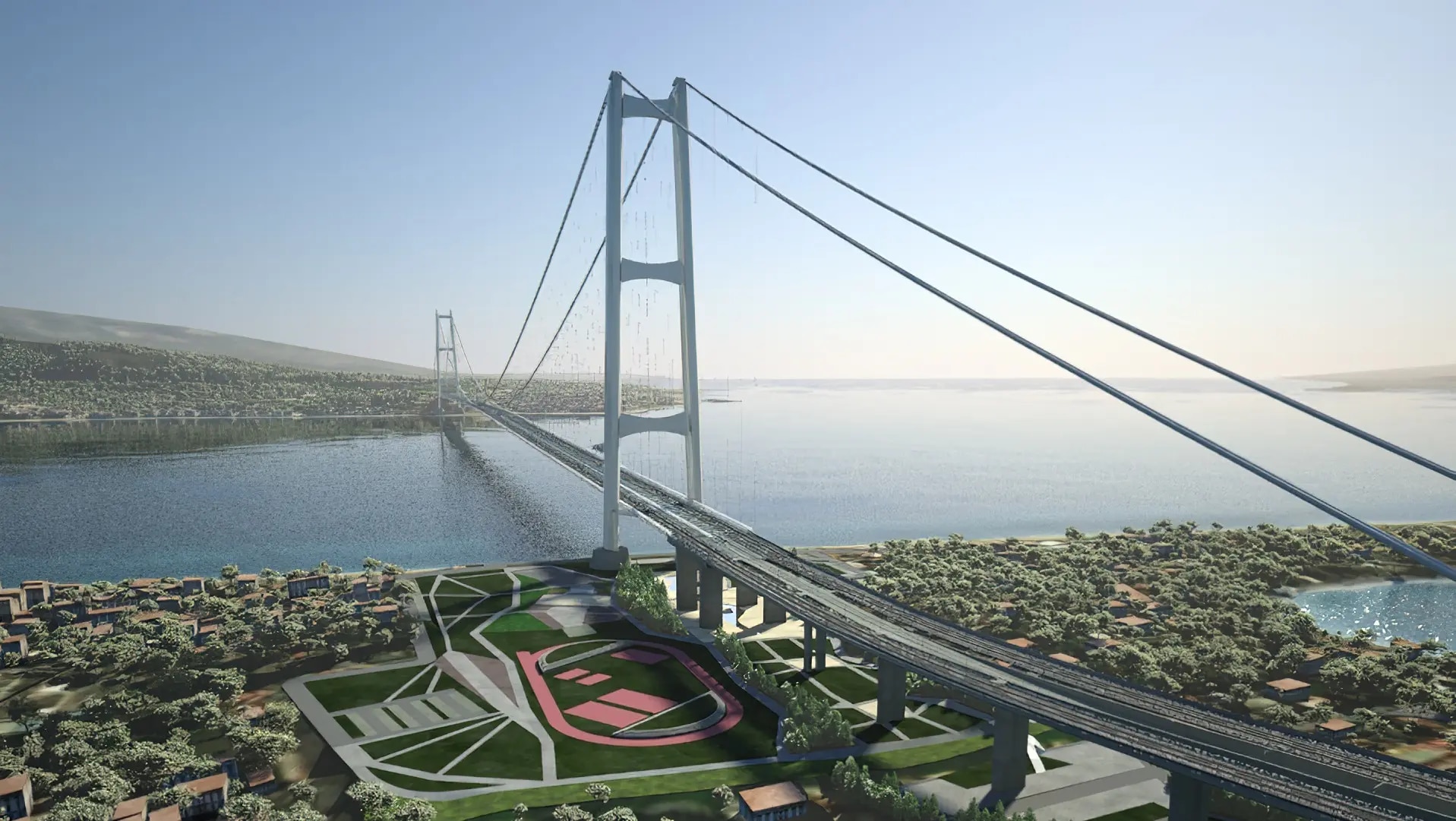The board of directors of Stretto di Messina spa – which has been in liquidation for ten years and was reconstituted last year thanks to a decree approved on March 16 by the Italian Council of Ministers – yesterday approved the update of the final project of the bridge over the Strait of Messina, between Sicily and Calabria, in Southern Italy. Over the past year, the Eurolink consortium, the group of companies that won the tender in 2005 and is still entrusted with the project, has therefore reworked the final project presented in 2011, which the Meloni government has decided to restart to begin the works. The current project involves the construction of what should become the longest single-span bridge in the world, with a length of 12,008 feet and a suspended span of 18,826. It is supported by two towers 1,112 feet high, formed by two pillars connected by three large beams.
Several technical aspects have been revised compared to the previous version, material choices have been reconsidered, and the expropriation plan necessary to obtain the space to build the work has been specified. In addition to the bridge, 25 miles of road and rail connections will be built, most of which tunnels and a new subway line with three underground stops will be built in Messina. Costs have increased by approximately 2.5 billion compared to the 12 billion forecasted in 2011 but could further increase. A clause has been included in the project that provides for the cancellation of the works and the initiation of a new tender if expenses exceed the forecasts by 50%.
According to estimates, the travel time of the bridge will be about 15 minutes for trains from Villa San Giovanni to Messina, compared to the current 45 minutes for passenger trains transported by ferries, and 60 minutes for freight trains. Moreover, it will only take 10 minutes to drive from the Santa Trada junction to the Giostra junction, compared to the current 70 minutes. The problem is that then it takes more than 13 hours to travel from Trapani to Ragusa by train, with four changes. In Sicily, and not only there, railway mobility has been stuck in the past thirty years, almost half of the lines are not electrified, and 85% are single-track. The average age of trains is 18.1 years.
At the beginning of the month, Europa Verde, PD, and Sinistra Italiana parties filed a complaint with the Prosecutor’s Office asking the judiciary to investigate the project, complaining about its lack of transparency: before approval, Stretto di Messina Spa denied any type of documentation and updates about the project, both to environmental associations and to deputies who had requested it. Minister of Infrastructure Matteo Salvini hopes to start construction sites by the end of the year and to open the bridge to road and rail traffic in 2032, but the procedure to obtain the final authorizations and start the works is still lengthy: in addition to discussing expropriations (one of the most delicate points, and one where it is difficult to see the horizon of an agreement), an environmental impact assessment will be required, and then the executive project will need to be prepared and approved.
The cover image is courtesy of Webuild.


